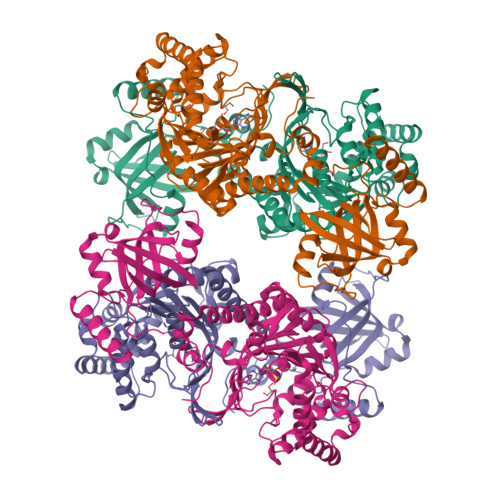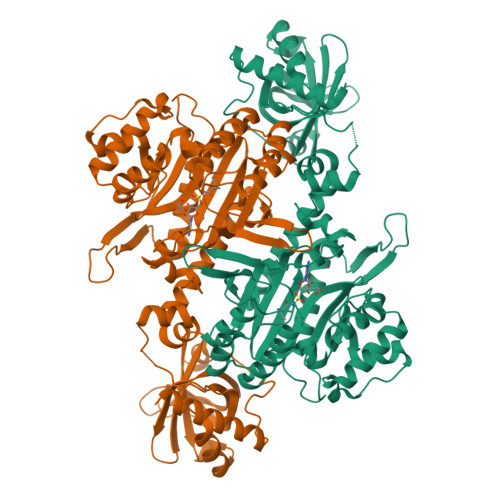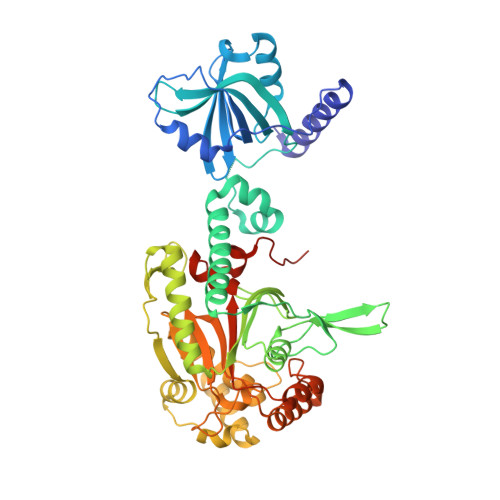Structural analyses of a human lysyl-tRNA synthetase mutant associated with autosomal recessive nonsyndromic hearing impairment.
Wu, S., Hei, Z., Zheng, L., Zhou, J., Liu, Z., Wang, J., Fang, P.(2021) Biochem Biophys Res Commun 554: 83-88
- PubMed: 33784510
- DOI: https://doi.org/10.1016/j.bbrc.2021.03.093
- Primary Citation of Related Structures:
7EA9 - PubMed Abstract:
Aminoacyl-tRNA synthetases (AARSs) catalyze the ligation of amino acids to their cognate tRNAs and therefore play an essential role in protein biosynthesis in all living cells. The KARS gene in human encodes both cytosolic and mitochondrial lysyl-tRNA synthetase (LysRS). A recent study identified a missense mutation in KARS gene (c.517T > C) that caused autosomal recessive nonsyndromic hearing loss. This mutation led to a tyrosine to histidine (YH) substitution in both cytosolic and mitochondrial LysRS proteins, and decreased their aminoacylation activity to different levels. Here, we report the crystal structure of LysRS YH mutant at a resolution of 2.5 Å. We found that the mutation did not interfere with the active center, nor did it cause any significant conformational changes in the protein. The loops involved in tetramer interface and tRNA anticodon binding site showed relatively bigger variations between the mutant and wild type proteins. Considering the differences between the cytosolic and mitochondrial tRNA lys s, we suggest that the mutation triggered subtle changes in the tRNA anticodon binding region, and the interferences were further amplified by the different D and T loops in mitochondrial tRNA lys , and led to a complete loss of the aminoacylation of mitochondrial tRNA lys .
Organizational Affiliation:
State Key Laboratory of Bioorganic and Natural Products Chemistry, Center for Excellence in Molecular Synthesis, Shanghai Institute of Organic Chemistry, University of Chinese Academy of Sciences, Chinese Academy of Sciences, 345 Lingling Road, Shanghai, 200032, China.





















